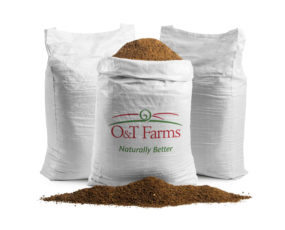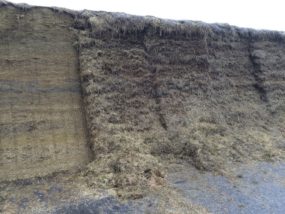In modern agriculture, technology and automation have become more accessible, and small equipment can now pack a big punch. Application drones have given farmers the ability to do their own aerial applications. However, it is important to make an informed decision about whether these spray drones are suited for your operation, which spray drone is right for you and if custom application is better than outright purchasing.
With any equipment purchase, there is always the battle of cost versus the return on investment (ROI). Making an informed decision requires looking at the equipment itself and understanding the finer nuances of the technology. Here is a quick guide that highlights several things to think about when considering spray drones.
1. Different uses
There are different attributes that are important depending on what you’d like to use the drone for. For example, if you are spraying a vineyard, a large drone with a large tank that can do higher rates and have more down pressure may be the better option. Those completing large acreages may place more emphasis on speed and efficacy from proper downwash pressure. Smaller drones may be better for those doing remote or spot applications since a smaller drone is easier to transport with you and costs slightly less.
2. Efficiency and efficacy
Efficiency (acres per hour) and efficacy play a direct role in achieving a high ROI. Having an extra 10-20 litres on a tank makes a huge difference and gives you the potential to cover 1-2 more acres per tank if you are filling roughly eight to 15 times per hour. You must also consider applying higher rates, flying back and forth to ferry the loads and the number of refills needed to complete an operation.
Speed affects both efficiency and efficacy as well. In my experience, the faster you go, the less disturbance from downwash there is, which in turn gives you more uniformity and control over your swath. Like speed, weight also plays a role. Increasing drone weight means there is more downwash, which creates larger swaths and droplet downforce into the canopy.
This leads to the centrifugal atomizers (nozzles) and pumps of the drone. All modern drones have specially designed spinning disks that allow you to change droplet size and rate on the fly. These work in tandem with the propeller down pressure to help increase efficacy.
3. Durability
It is important that agricultural equipment is durable and built to last, and spray drones are no exception. Application drone longevity can be increased by having strong, nonbrittle blades with some flexibility; case-protected batteries with a water-cooling system for efficiency and longevity; heavy-duty metal motors; and well-built cables and electronics that can withstand rough conditions, such as being dragged or pressure washed.
4. User-friendliness
It is standard for all spray drones to incorporate some kind of screen into their controller system – whether that’s built-in to the controller or having the ability to use a handheld device (such as a smartphone). They are all simple interfaces and really just come down to which system you are most familiar with. Larger factors to consider are the features these interfaces offer and how autonomous they are. Diagnostic tabs, optimal route planning, prescription application, data security and inserting a SIM card for drone management are several things to investigate. Other “user-friendly” qualities, such as handles or top propulsion systems that easily clip apart from the tank landing gear, can also help user-friendliness by making transportation easier.
5. Stability and crash resistance
Product design and accident prevention are also very important. Features that may seem insignificant, such as centre of gravity or rotor style, can have an outsized effect. For example, a bottom-loaded tank means there is a lower centre of gravity. This helps increase flight stability, but it also means that if the drone were to crash, there is less risk of it toppling over and getting more damage than necessary. Another example would be semirigid or “teeter-toter” rotors, which help flight agility and put less pressure on the motor bearings. This helps increase the longevity of the motors.
6. Maintenance and repair
Some drone manufacturers require you to send the drone to a certified repair station if you need a fix, and then you must wait for them to ship it back to you. This waiting can have detrimental effects during critical application windows. Other manufacturers encourage you to do repairs on your own and provide online schematics to help you do so. Easily accessible wiring harnesses and plug-and-play wires are two indicators that the drone manufacturer will let you repair your own equipment rather than waiting on a repair service. There are even some drones that can be fixed with just three different-sized Allen keys – this is a game changer.
7. Company service
Customer service can be as equally important as the drone itself. Since drones have become increasingly popular, many drone users have become dealers just to get the dealer discount. These pop-up dealers tend to sell drones but do not offer parts or services. This means it is very important to ensure that your equipment is coming from someone who knows it thoroughly and can offer you support with service and in-stock parts. The last thing you want to have happen is a breakdown that leads to a standstill during a critical application window because you can’t get the support or parts you need.
8. Licensing and training
Since a drone is classified as an aircraft, flying one requires a drone licence and, potentially, a special operating certificate (SFOC). Obtaining this licensing and/or certification is not necessarily difficult, but it can be time consuming. Regardless of whether you purchase a new or used drone, getting proper flight and repair training is highly recommended. This will help you learn how to safely and effectively operate the drone. Remember, a drone is only as good as its operator.
9. Learning how to spray
Applying with a drone does take some time and learning. Aerial application introduces many variables and is a different ball game than using a ground sprayer. Drones can be very efficient, reliable and accurate, but it does take a skilled pilot. If you are willing to put the time into learning and practicing, it can become a very useful and versatile tool.
10. Custom operation versus self-operation
Starting out with spray drones requires more than just the initial cost of purchasing the drone. There is also the cost of legalizing with insurance, SFOCs, licensing (flight school), and trailer or application set-up costs. An alternative to purchasing your own application drone is to hire it out to someone who does custom work. Deciding whether the cost and skills required to purchase and operate your own drone or if hiring someone to do custom work is right for you depends on your operational needs.
The guide provided in this article contains points to consider and may require more explanation. Please do further research or contact the author with any questions or for more information.











